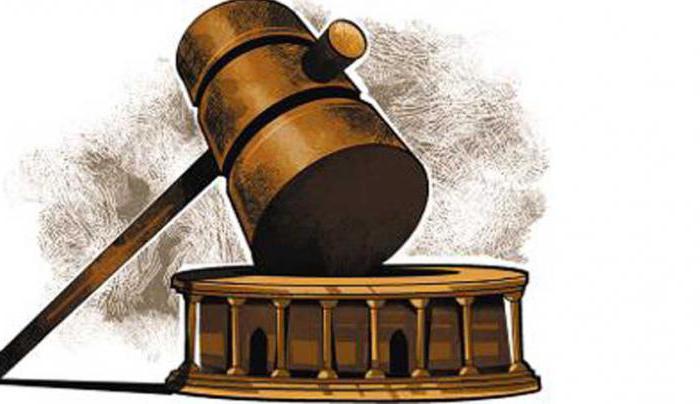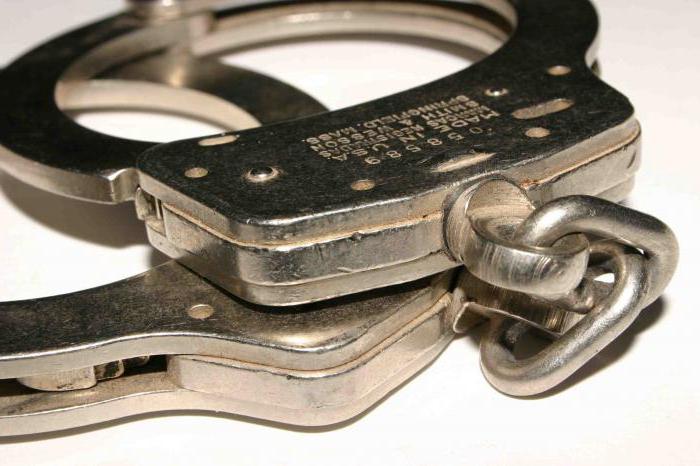Administrative proceedings are probably the broadest area in the Russian judicial system. What is an administrative offense? What is an administrative fine? Detailed answers to these questions can be found in the article.
Concept of offense
What is an administrative offense? This is a guilty action or inaction committed by a person that violates the rights defined by law. A special regulatory act, referred to as the Code of Administrative Offenses, establishes a number of penalties for administrative violations of the law.
Any administrative offense is an act that has three attributes. What are these signs? Specialists distinguish:
- wrongfulness - violation of certain legal norms;
- guilt - the presence of guilt in the act (guilt may be intentional or in the form of negligence);
- punishability unlawful act, that is, the existence of administrative responsibility.
Any administrative type offense is divided into several types, which will be described later.
Types of Administrative Punishment
The Russian Code of Administrative Offenses divides all unlawful acts into several groups. Here are the deeds worth highlighting here:
- in the field of protecting the Russian border;
- in the field of agriculture;
- in the field of property protection;
- in the field of protection of nature and the environment;
- in the field of information and communication;
- in the field of military registration of citizens;
- in the field of protecting public order and state security.
Illegal acts may infringe on the health of citizens, on private or state property, on the sanitary well-being of citizens, on the moral of society, etc.
For each of the presented violations relies on the imposition of administrative responsibility in the form of punishments. What is the punishment system, what is the place of fines in administrative cases? This will be described later.
The concept of administrative punishment
The measure of responsibility established by the state for committing an unlawful act is called administrative punishment. Essentially, punishment is a form of statutory coercion. Administrative coercion is characterized by the presence of punitive sanctions, as well as specific goals that are applied in strict procedural order.
All types of administrative penalties are recorded in article 3.2-3.12 of the Administrative Code of the Russian Federation. No other form of coercion can be used as punishment. What cannot be administrative types of coercion? It is worth highlighting, for example, a ban on the operation of vehicles, removal from work of heads of state organizations, revocation of licenses and certificates, etc.
Goals of Administrative Punishment
According to the same Code of Administrative Offenses, the use of administrative types of coercion is possible in case of violation of constitutional, financial, labor, civil or criminal procedure law. The main purpose of administrative punishments is to inflict certain legal damage on the guilty person, and to worsen the citizen's legal status. It is necessary to create a state of punishment in order to prevent the emergence of new unlawful acts.
Is punishment an end in itself to administrative punishments? Yes and no.Of course, punishment brings up the guilty subject, instills in him respect for the rule of law and the law. On the other hand, the goal of administrative sanctions is the general prevention of offenses. Punishments act as preventive methods of crime prevention.
Naturally, administrative punishment should not diminish the human dignity of the offender. In the Russian state, the use of physical and mental torture is prohibited, which could bring suffering to a citizen. Under strict prohibition and damage to business reputation of legal entities. The entire normative act, called the Code of Administrative Offenses, is structured in such a way that punishments for unlawful acts would not detract from the honor and dignity of a citizen.
Types of Administrative Punishment
Before moving on to the question of what the administrative penalty of the Code of Administrative Offenses of the Russian Federation is, it is worth analyzing all the main types of liability for unlawful acts. The law states that the list of punishments given in the Code of Administrative Offenses cannot be expanded by the laws of the regions or by any other normative acts other than federal ones.
Article 3.2 provides an exhaustive list of the main administrative sanctions, varying in severity, composition and characteristics. All of them form a wide system of punishments used by officials during legal proceedings. At the moment, nine main types of sanctions are recorded:
- a warning;
- seizure of the instrument of offense on a reimbursable basis;
- administrative arrest;
- confiscation of the instrument of offense;
- deprivation of a special right of an individual;
- disqualification;
- expulsion from Russia of a foreign citizen or a stateless person;
- suspension of professional activity;
- deprivation of special right;
- administrative penalty.
It is about a fine of an administrative type that will be discussed later.
What is an administrative fine?
The monetary penalty from a legal or physical person who has committed an unlawful act is called an administrative fine. This is a property penalty. Many lawyers consider the fine for an administrative offense (the decision of the Code of Administrative Offenses in Article 3.5) to be almost the most effective method of influencing a guilty citizen.
From 1992 to 2007, an administrative fine was considered equal to a multiple of the minimum wage, or a multiple of the established amount of 100 rubles. At the moment, everything has changed somewhat. From now on, fines are expressed in rubles, as it was before 1992. In accordance with article 3.5 of the Code of Administrative Offenses of the Russian Federation, an administrative fine should not be less than 100 rubles, not more than 5 thousand rubles for individuals, 50 thousand rubles for officials and 1 million rubles for legal entities. The administrative fine also has some other features, which will be described later.
Features of determining the administrative fine
The multiplicity of fines is established by Article 3.5 of the Administrative Code of the Russian Federation. In accordance with this decision, a fine for an administrative offense may be expressed in a multiple of:
- the value of the proceeds of the guilty person from the sale of goods, if the offense was committed in the market;
- cost of unpaid fine;
- the amount of funds that were not returned within the statutory period to the Russian budget;
- the value of finances that were not credited to the accounts of the respective banking organizations;
- the amount of taxes or customs duties that were not paid at the time of the suppression of the offense;
- the value of the subject of the wrongful act;
- the value of a currency transaction deemed illegal;
- the value of foreign currency earnings that have not been sold;
- the value of securities or cash credited or written off with failure to comply with the established reserve requirements.
The law refers to the amount of revenue for one calendar year.  The department for collecting administrative fines does not have the right to collect amounts from the offender in excess of five times the value of the property that was stolen.
The department for collecting administrative fines does not have the right to collect amounts from the offender in excess of five times the value of the property that was stolen.
About the size of the administrative fine
It is worth moving, finally, to more accurate figures. As already mentioned, the amount of the penalty has the multiplicity of the value of the subject of the wrongful act. The amount may depend on many factors: the gravity of the offense, arrears of an administrative fine, and finally, the value of the subject of the offense.  At the same time, the following fines are established in the Code of Administrative Offenses:
At the same time, the following fines are established in the Code of Administrative Offenses:
- Individuals pay no more than 5 thousand rubles in fine. The exceptions are articles that violate the right to freedom of conscience of another person. Here the size of the fine can reach 30 thousand rubles.
- Officials may pay up to 50 thousand rubles in fines. However, there are articles in the Code of Administrative Offenses providing for a fine and up to 800 thousand rubles.
- Delinquent legal entities must pay a fine of up to 60 million rubles.
How is the decision to pay an administrative fine executed? What is a “recovery order"? This will be described later.
On the execution of the decision
The decision on recovery in the form of a fine is a court decision on the basis of the consideration of an unlawful act. There are certain deadlines for the execution of a court order. The Code of Administrative Offenses says that the period for payment from the moment of a lawful court order should be no more than 60 days. On appeal of the court decision is given 10 days. The offender, therefore, has 70 days to pay the fine.
If a citizen fails to pay the fine within the time prescribed by law, a sanction will be applied in the form of 15 days of arrest or a fine in double amount.